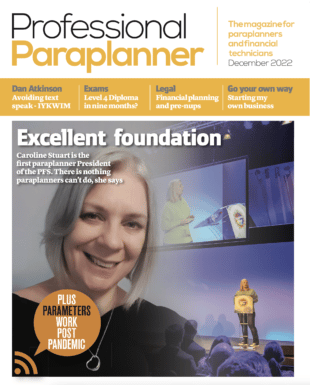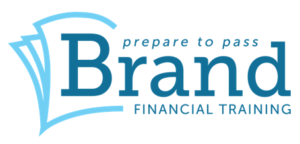The Brand Financial Training team look the key areas around risk profiling of clients for those studying for the CII exams.
FinaMetrica define risk profiling as a process for finding the optimal level of investment risk for a client by balancing:
- the level of risk the client needs to take (the risk required);
- the client’s risk capacity; and
- the client’s risk tolerance.
In this article, we’ll briefly review each of these aspects of risk profiling in turn, before taking a quick look at risk profiling tools.
Risk required
The amount of risk required is the level of risk needed to enable a client to achieve their financial objectives, given the financial resources they have available.
For example, if a client needs a lump sum of £40,000 in 10 years’ time and only has £20,000 to invest, to achieve their goal they will need to take a significant amount of risk. Realistically, an equity-based investment is going to be required to have a chance of achieving this financial objective. But such an investment might not be suitable for the client. It is for this reason that risk profiling also takes into account risk capacity and risk tolerance. Otherwise clients may well take investment decisions that are way too adventurous for their financial security and emotional well-being.
Risk capacity
The FCA defines capacity for loss as: ‘the customer’s ability to absorb falls in the value of their investment.’
A client’s capacity for loss is primarily determined by objective factors, including their:
- financial resources, both now and in the future;
- timescales for investing;
- age and state of health.
Risk tolerance
In contrast to capacity for loss, risk tolerance is a subjective measure and develops over time. You might also hear it referred to as attitude to, or appetite for, risk.
A client’s risk tolerance is determined by a number of factors, including:
- timescales for investing;
- understanding how investments work; and
- experiences, both good and bad, of past investing.
Typically, younger people with higher levels of education are more risk-seeking, as are those who have already experienced investing in the stock market and have achieved good outcomes in the past. As we get older, we tend to get more risk averse. However, generalisations are of no use to a financial planner, hence the need for risk profiling tools.
Risk profiling tools
Risk profiling tools aim to assess the client’s risk tolerance. Most commonly, these are questionnaires which ask the client how they go about making investment decisions and what makes them feel comfortable, or indeed uncomfortable, when thinking about how their investments might perform.
The output of these tools is typically a score (e.g. between 1 and 7) or a label (e.g. cautious, balanced or adventurous).
However, there are some downsides to risk profiling tools, including:
- There are a range of tools available, so due diligence needs to be conducted when selecting the most suitable one. Different profilers will provide different results, albeit the differences may well be marginal.
- Depending on how client-friendly the tool is, a client may misunderstand a question and give an inappropriate answer making the results less reliable
- If a client has more than one objective, it can be time-consuming to repeat the process for each objective.
- If a client has no capacity for loss, then a risk profiling tool is of little relevance.
Bringing it all together
Once the adviser has the outcome of the client’s required risk, their capacity for loss and their risk tolerance a discussion can then take place in terms of how much to invest in relation to each of the main asset classes.
[Main image: ben-sweet-2LowviVHZ-E-unsplash]
About Brand Financial Training
Brand Financial Training provides a variety of immediately accessible free and paid learning resources to help candidates pass their CII exams. Their resource range ensures there is something that suits every style of learning including mock papers, calculation workbooks, videos, audio masterclasses, study notes and more. Visit Brand Financial Training at https://brandft.co.uk































